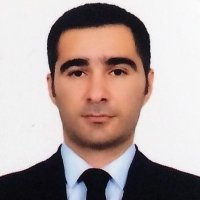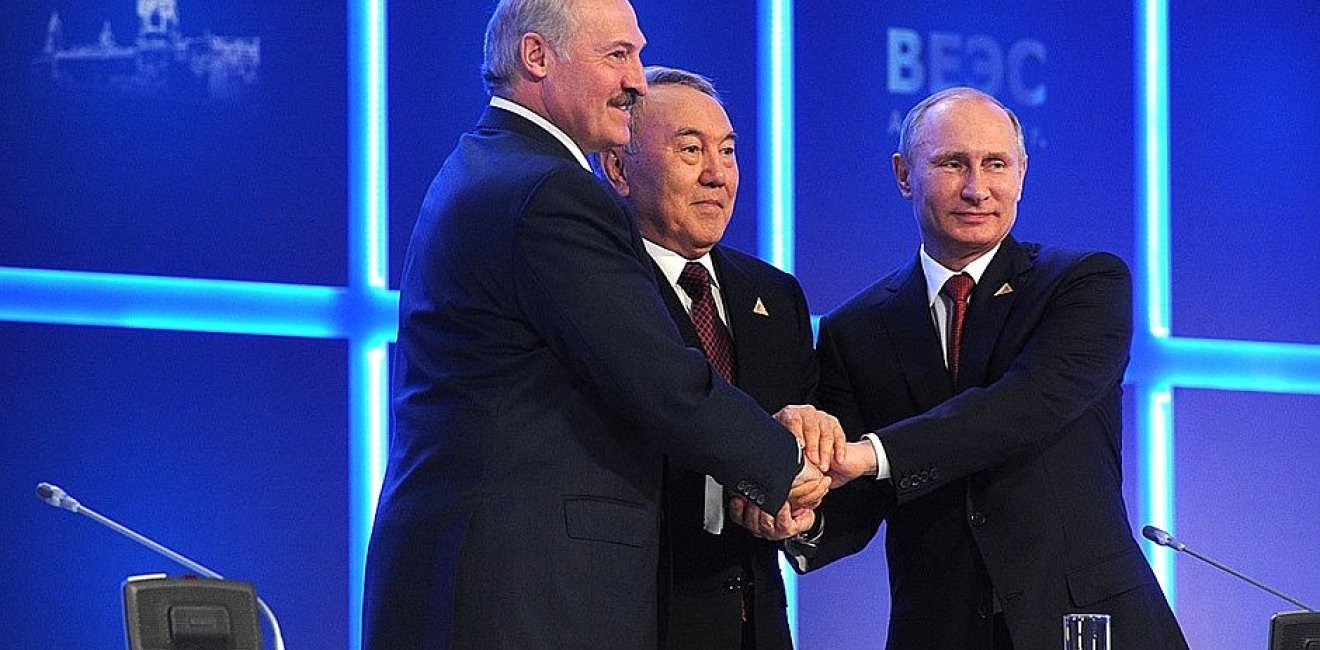
A blog of the Kennan Institute
BY RAHIM RAHIMOV
Russian president Vladimir Putin hosted leaders of the Eurasian Economic Union (EEU) in an informal summit in Saint Petersburg on December 20. The format of this year’s gathering was a bit different from previous years as the leaders of the Commonwealth of Independent States (CIS) also arrived in Saint Petersburg to make it a joint informal summit of the EEU and the CIS.
Earlier this year, at the October 11 CIS summit in Ashgabat, Turkmenistan, Vladimir Putin had explicitly invited the CIS leaders to attend the Saint Petersburg event. Putin’s invitation was of a piece with his January 1, 2018, call for a “deeper pairing of the formats of the Eurasian Economic Union and Commonwealth of Independent States.” Such an approach to integrating the post-Soviet space was predictable in many regards. Indeed, the series of 1917 Russian revolution films broadcast on major Russian state TV channels before the 2018 presidential elections signaled, through their take on historical events, that Moscow is going to behave more sensitively, if not assertively, in particular with those CIS countries that have not joined the Russian-led integration structures, such as the EEU or the Collective Security Treaty Organization (CSTO), an intergovernmental military alliance formed within the framework of the CIS.
Interpretation of historical events appeared on the agenda of the December 20 informal summit, too. For the Kremlin, the gathering represented an audience of the like-minded. In response to the European Parliament’s September 19, 2019, resolutions regarding World War II prehistory narratives, which resolutions accused Russia of “distorting historical facts,” Putin passionately made the case at the summit for the Russian version of history, introducing archival documents to support his position and noting Russia’s desire for truthfulness and openness in interpreting history. Putin’s apparent bland earnestness was well received by attendees, who took up his invitation to tour the accompanying exhibit.
Nonetheless, while appearing to be in solidarity with Putin on the topic, some CIS and EEU countries are unhappy with Moscow’s attitude toward historical and more recent events. For example, many in Azerbaijan see it as unfair that the Soviet authorities failed to honor its capital, Baku, with the title “City Hero,” an honorific that, in the Soviet era, was bestowed on cities that had played an important role in battles against Nazi Germany. Baku produced 80 percent of oil used by the USSR then, and Azerbaijani oil was crucial to the World War II victory of the USSR.
Armenia, a close ally of Russia, is also unhappy with Moscow. Russia recently dismantled a memorial plaque in the Russian city of Armavir honoring Garegin Nzhdeh, a controversial Armenian figure. Though Armenia sees Nzhdeh as a national hero, he was arrested by the Soviet authorities for collaborating with Nazi Germany. The dismantling came after Azerbaijan’s president Ilham Aliyev called on the CIS leaders to fight against the “glorification of Nazism” in the CIS countries, specifically singling out a different monument to Nzhdeh in Armenia but referring obliquely to the plaque in Armavir.
Alongside symbolic and historical issues of this sort, more significant sources of troubles for Russian-led integration processes in the post-Soviet space are major political and economic obstacles that Moscow finds difficult to overcome. In particular, conflicts between individual CIS nations have sapped the Kremlin’s energies. Border and territorial disputes between Kyrgyzstan, Russia’s close ally in the CSTO and EEU, and Moscow’s other CSTO ally, Tajikistan, have proved a hurdle to the latter’s accession to the EEU.
The most stubborn problem, however, is the Nagorno-Karabakh conflict, in which Azerbaijan and Armenia are fighting a territorial and ethnic war. For most in Azerbaijan, it is unacceptable to enter into a formal alliance with Armenia by joining either the EEU or CSTO, as Azerbaijan views Armenia as an occupying power of its internationally recognized territories. Yet Armenia, currently a member of both, threatens to exercise its veto power should Azerbaijan attempt to join either organization.
Moscow is right to be concerned about its difficulties moving forward with its post-Soviet integration processes. Moldova is fettered by its Association Agreement with the EU. Georgia and Ukraine left the CIS because of conflict with Russia. Moscow is keen to counter the development of any similar scenarios. Russia has huge military and other forms of leverage in the post-Soviet space, but those tools may be ineffective or insufficient.
A foundational problem is that Russia’s economy is a poor match for its military power and its geopolitical ambitions. Without some economic attraction, it is hard, if not impossible, for Moscow to draw CIS countries, especially economically better-off ones, closer into its orbit. Russia’s economy is smaller than that of Italy, an EU member state, and much smaller than the economies of leading EU powers such as Germany. But in population, Russia vastly surpasses any individual EU member state, and its land area is greater than the European continent’s. Thus, compared to the situation in EU nations, its much smaller economy must support its much larger population. Yet Russia’s giant military force and its involvement in conflicts in Syria and elsewhere impose a heavy burden on its modest economy and constrained budget, consuming large amounts of resources. Moreover, Moscow provides big subsidies to its allies—Armenia, Belarus, Kyrgystan, Tajikistan—to keep them within its umbrella organizations.
Other political barriers stand in the way of a formal EEU-CIS merger. While the non-EEU countries in the CIS are closely engaging with Russia, they also insist on staying clear of the EEU or the CSTO. Azerbaijan’s assumption of the chair of the Non-Aligned Movement (NAM) countries for 2019–2022 is a message in that regard. Another NAM country leader, Turkmenistan’s president Gurbanguly Berdymuhamedov, awarded Sergey Lebedev, the executive secretary of the CIS, the Order of Neutrality, in both a reminder and a symbolic reaffirmation of Turkmenistan’s neutrality. Moscow is mindful of the fact that it must take into consideration the restraints on its ambition to expand the EEU and the CSTO into the rest of the CIS.
Russian expert Sergey Markedonov argues that if Azerbaijan joins the EEU, the organization will become a clone of the CIS and yet another ineffective structure owing to disputes with Armenia and related disagreements and vetoes. Therefore, the rationale behind pairing the EEU and the CIS through initiatives such as the joint informal summit can’t necessarily be regarded as Moscow’s effort to enlarge the EEU by channeling the CIS leaders into it. The rationale is to keep a close eye on the EEU and CIS countries rather than integrate the two organizations, and also to create good optics for audiences inside and outside Russia.
Author


Kennan Institute
After more than 50 years as a vital part of the Wilson Center legacy, the Kennan Institute has become an independent think tank. You can find the current website for the Kennan Institute at kennaninstitute.org. Please look for future announcements about partnership activities between the Wilson Center and the Kennan Institute at Wilson Center Press Room. The Kennan Institute is the premier US center for advanced research on Eurasia and the oldest and largest regional program at the Woodrow Wilson International Center for Scholars. The Kennan Institute is committed to improving American understanding of Russia, Ukraine, Central Asia, the South Caucasus, and the surrounding region through research and exchange. Read more

Explore More in The Russia File
Browse The Russia File
Chechnya as a Model of Modern Russia

Russia’s Indigenous Communities and the War in Ukraine

Gas and Power in a Changing US–Russia Relationship

